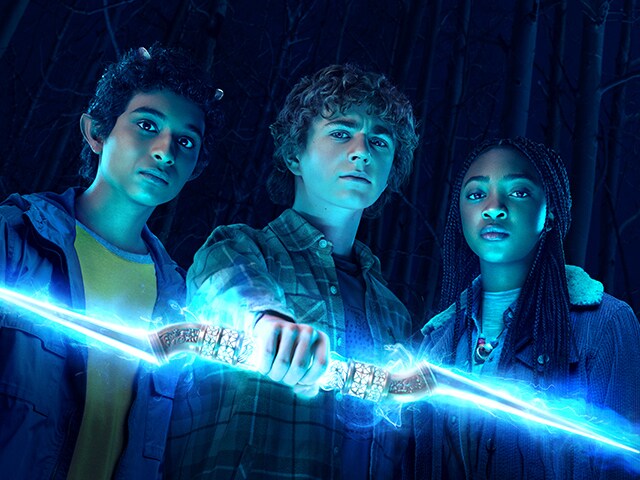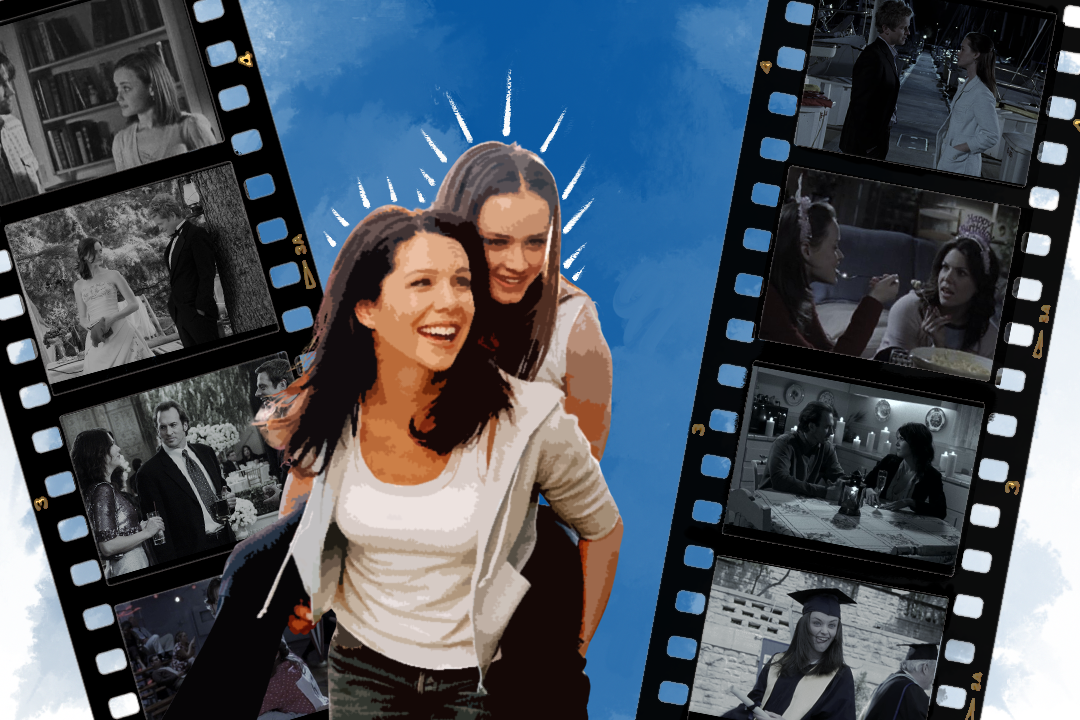Jan. 30 was a night of compulsory Disney+ logins for millennials and Gen-Z-ers alike with the release of the final installment of the eight-episode Percy Jackson and the Olympians series.
180 million copies of Rick Riordan’s six-book, mythology-inspired Percy Jackson series sit on the shelves of adults, adolescents, libraries, and book shops worldwide. And fans of the books, which debuted in 2005 with The Lightning Thief, were eager to replace the subpar movie adaptations with a faithful retelling under the author’s guidance.
The Disney+ show’s highlight is undeniably the cast, which features talented and accurately-aged actors. The show stars Walker Scobell as Percy Jackson, Leah Jeffries as Annabeth Chase, and Aryan Simhadri as Grover Underwood.
Scobell embodies the heart and wit of Percy, complementing Jeffries’s sharp tongue as Annabeth, and Simhadri’s kind-hearted portrayal of the group’s satyr protector. The three actors breathe new life into childhood readers’ experiences with emotionally-charged scenes pulled straight from the book’s pages.
The characters, as portrayed by the series’ actors, are suitably endearing. The experience of seasoned performers — such as Adam Copeland, who plays Ares, and Jessica Parker Kennedy as Medusa — build the series into a nostalgic experience alongside the youthful main trio. Scobell and Jeffries, in particular, exhibit an impressive range of emotions, on par with their veteran counterparts — most notably, Virginal Kull, who steals each scene as Sally Jackson, Percy’s mother.
Although the show opens with Camp Half-Blood’s rich and fun atmosphere, the season progresses into higher stakes and serious themes involving world destruction and the loss of family. As the adolescents journey to return Zeus’s lightning bolt, they uncover the self-serving plans of the Olympus gods, which shifts the narrative from a simple quest to a race to break generational disputes.
Catching call-backs to the books along the way is a fun easter-egg hunt for readers of the series. Spotting Annebeth’s classic NYC cap, the blue foods Percy and Sally Jackson love, and hearing the names of future characters in the Lotus Casino scene reminded me of reading Riordan’s books in elementary and Brea Junior High classrooms.
Another defining aspect of the show is the visual effects. Adapting Greek mythology and elements of fantasy creates expectations to bring those settings to life. The $12 to $15 million cost for each episode ensured the settings of the Underworld, Olympus, and Lotus Casino’s grandiose architecture were rendered faithful to the original text, immersing us even further into Riordan’s mythological world.
I fell in love with the books as a child and hadn’t picked them up since, but the revival of the online fandom made it easy to dive back in. Many millennials read the books while teens and their love for Riordan’s series has been reignited through online discussion. Users across Tumblr, Twitter/X, and Instagram — hubs for the Percy Jackson fandom — gather in comment sections to celebrate the rebirth of a childhood reading staple. After all, the show was tailor-made to be a “tribute to the kids who are reading the books now or grew up reading them,” Rick Riordan stated. His ambition paid off when the actors and visuals built the most accurate and beloved Percy Jackson adaptation to date (a stark difference from the movies that even Rick Riordan refuses to watch.)
Despite the show’s many achievements, a tonal issue persists throughout the series. While the occasional dark and serious tone is appropriate for Greek mythology, it mutes much of the wit and emotion flowing from each page of the books. However, the change makes sense — the books are narrated in the first person by Percy Jackson, who uses a constant stream of hilarious narration. It’s harder to portray that in a third-person, detached perspective.
At times, it was hard to love an episode when the pacing was rushed or they lingered on a subplot for too long, like in episode 3; while the references to Medusa’s original Greek myth were appreciated, the drawn-out monologuing only confused and bored viewers. At times, the show could have better heeded the “show, don’t tell” rule. As common with book adaptations, it’s difficult to reconcile changes in plotlines or dialogue to fit a new television format.
Changes are to be expected when adapting a book — especially a multi-chaptered, dynamic legend — to the screen. Some claimed the on-screen changes were a detriment to the series, but I saw the variations as a way to enrich the Percy Jackson universe.
Viewers should always expect fumbles when it comes to the tricky subject of turning book pages into episodes. When brief changes are made to plot development, dialogue, or story beats, Percy’s sincerity still captures the adoration of new and old fans in the arena of social media.
The demographic has shifted to encase both those who grew up with the books as they were released, and now Generation Z, who is following Percy Jackson as it takes on its third life in a new media form.
As a 15-year-old watching the Disney+ series whilst having loved the books since fourth grade, I eagerly awaited each Tuesday release of a new Percy episode because I knew that afterward, I’d be able to engage in online discussion with fans of all ages. As the series closed with its episode 8 finale, fans came together to celebrate the rebirth of a beloved piece of media, and that is reason enough to rejoice in the season 2 renewal announcement — I know I’ll continue to tune in on Tuesdays at 6 p.m. to follow the series as it unfolds.









